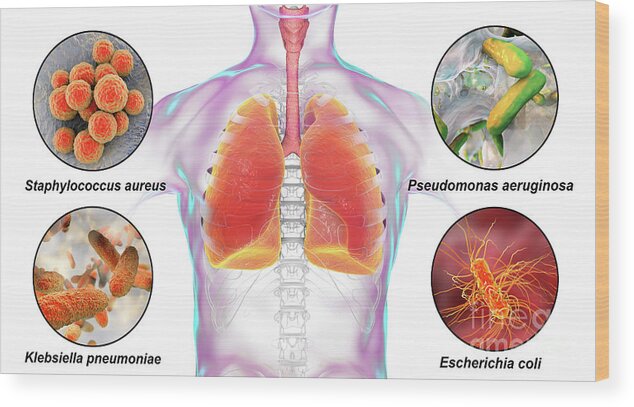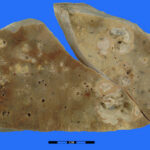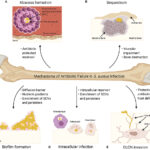Staphylococcus nosocomial pneumonia is a severe hospital-acquired respiratory infection predominantly caused by Staphylococcus aureus, including methicillin-resistant strains (MRSA). It frequently affects patients in intensive care units (ICUs), particularly those on mechanical ventilation. This form of pneumonia presents a significant clinical challenge due to its aggressive nature, antibiotic resistance, and association with high morbidity and mortality.

Causative Pathogen: Staphylococcus aureus in the Nosocomial Setting
Bacteriological Characteristics
- Gram-positive cocci in clusters
- Facultative anaerobe
- Produces cytotoxins and enzymes that contribute to tissue damage
- MRSA strains exhibit resistance to beta-lactam antibiotics
Common Hospital Reservoirs
- Contaminated surfaces and medical equipment
- Nasal colonization of healthcare workers and patients
- Catheters, endotracheal tubes, and ventilator circuits
Risk Factors for Staphylococcal Hospital-Acquired Pneumonia
| Risk Factor | Description |
|---|---|
| Mechanical ventilation | Major risk factor for ventilator-associated pneumonia (VAP) |
| Prolonged hospitalization | Especially in ICU settings |
| Immunocompromised state | Cancer, diabetes, steroid therapy |
| Recent surgery or trauma | Increases risk of aspiration and colonization |
| Previous antibiotic use | Disrupts normal flora and selects for resistant organisms |
| Invasive procedures | Central lines, endotracheal tubes, urinary catheters |
Pathogenesis of Staphylococcus-Induced Nosocomial Pneumonia
Once the bacteria breach pulmonary defenses, they initiate an inflammatory cascade, disrupting alveolar integrity, forming abscesses, and impairing gas exchange.
Clinical Manifestations
| Symptom | Clinical Presentation |
|---|---|
| Fever and chills | Abrupt onset, may be masked in immunosuppressed individuals |
| Purulent sputum | Thick, yellow or green, often malodorous |
| Cough and dyspnea | Worsens over time; associated with hypoxia |
| Chest pain | Typically pleuritic in nature |
| Respiratory distress | Tachypnea, accessory muscle use |
| Leukocytosis | Common in early stages; leukopenia may occur in severe cases |
Diagnostic Workup
Radiologic Evaluation
- Chest X-ray: Shows localized or multilobar consolidation, cavitation possible.
- High-resolution CT scan: Differentiates abscesses, empyema, or necrotizing pneumonia.
Microbiological Confirmation
- Sputum culture: Collected before antibiotic initiation
- Endotracheal aspirates or BAL: Especially in ventilated patients
- Blood cultures: To detect bacteremia or sepsis
- Rapid PCR assays: For MRSA detection in respiratory samples
Laboratory Markers
- Elevated CRP and procalcitonin
- Arterial blood gas analysis shows hypoxemia
- Elevated lactate in systemic infection
Antibiotic Therapy: Empirical and Targeted Regimens
Empirical Treatment Options
Initiated promptly, guided by hospital antibiograms:
- Vancomycin (15–20 mg/kg IV q8–12h)
- Linezolid (600 mg IV/PO q12h)
- Ceftaroline or Daptomycin (not for pneumonia, due to inactivation by lung surfactant)
De-escalation Based on Sensitivity
- If MSSA: Switch to Nafcillin, Oxacillin, or Cefazolin
- Duration: Typically 7–14 days, extended for complications like empyema or cavitary lesions
Supportive and Adjunctive Measures
- Oxygen supplementation or mechanical ventilation
- Fluid resuscitation and vasopressors in septic shock
- Mucolytics and physiotherapy to assist secretion clearance
- Glycemic control and nutritional support in ICU patients
Prevention of Staphylococcal Nosocomial Pneumonia
Infection Control Practices
- Rigorous hand hygiene with alcohol-based sanitizers
- Contact precautions for known or suspected MRSA carriers
- Daily chlorhexidine bathing in ICUs
Ventilator-Associated Pneumonia (VAP) Bundles
- Head-of-bed elevation to 30–45°
- Daily sedation interruption and weaning assessment
- Oral care with chlorhexidine
- Subglottic secretion drainage systems
Antimicrobial Stewardship
- Judicious antibiotic use to limit resistance emergence
- Regular antibiogram updates to guide empirical choices
Complications and Prognostic Indicators
Potential Complications
- Lung abscess and cavitation
- Pleural effusion and empyema
- Bacteremia and septic shock
- Acute respiratory distress syndrome (ARDS)
- Multiorgan dysfunction syndrome (MODS)
Poor Prognostic Factors
- Delay in effective antibiotic initiation
- Immunosuppression or neutropenia
- MRSA infection vs. MSSA
- Age >65 years
- Requirement for mechanical ventilation
Staphylococcus nosocomial pneumonia is a critical concern in modern healthcare facilities, often complicating the course of hospitalized or ventilated patients. Prompt diagnosis, guided empirical treatment, and strict infection control are essential to mitigating its impact. Early recognition and intervention reduce the risk of mortality and long-term pulmonary impairment, underscoring the need for vigilance in high-risk hospital settings.

